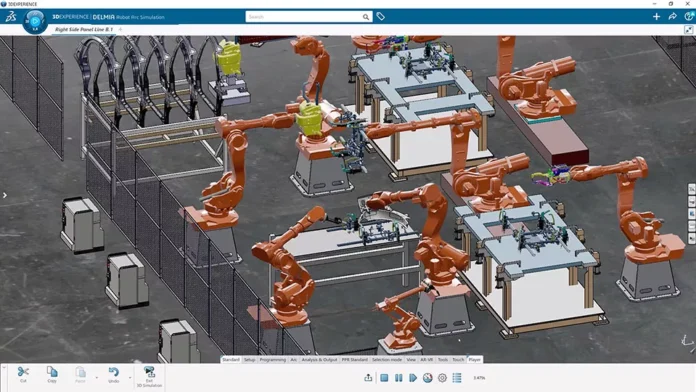How Can Simulation Reduce Robotics Development Costs?
Simulation tools are software applications that create virtual models of real-world systems. They allow engineers to design, test, and refine robotic systems—from basic 2D/3D visualizations to complex physics-based and AI-driven models—without building a physical prototype. This virtual approach enables thorough testing of robots, sensors, and their interactions in various environments, ensuring that algorithms and mechanical designs work as intended.
What Are Simulation Tools?
At their core, simulation tools digitally replicate the components and behaviors of physical systems. Whether you’re working on industrial robots, autonomous machines, or even surgical devices, these platforms let you experiment with and optimize your designs. They provide a controlled environment where you can debug and fine-tune performance before committing to expensive hardware.
Benefits of Using Simulation Tools
Simulation offers several key advantages in robotics development:
- Faster Iteration: Rapid prototyping allows you to test multiple design ideas quickly.
- Cost Reduction: By eliminating the need for immediate physical prototypes, you save on materials and manufacturing costs.
- Risk Mitigation: Early detection of potential errors minimizes costly mistakes during later stages of development.
- Enhanced Performance: Simulation enables thorough testing under varied scenarios, leading to more robust and efficient designs.
- Expanded Scope: It opens up opportunities to explore robotics applications in environments that are otherwise difficult or impossible to replicate.
Challenges to Consider
While simulation tools provide many benefits, they also present challenges:
- Model Accuracy: Capturing the true behavior of physical systems can be difficult; simplifying assumptions may compromise realism.
- Data Requirements: High-fidelity simulations often need large amounts of quality data, which isn’t always easy to obtain.
- Computational Demands: Detailed simulations require significant computing power and storage.
- Integration Issues: Merging simulation software with existing hardware and systems can be complex and may necessitate adjustments to interfaces or protocols.
- Validation: Ensuring that simulation results accurately reflect real-world outcomes requires careful verification and calibration.
Choosing the Right Simulation Platform
There is no universal solution when it comes to simulation tools; the right choice depends on your project’s specific needs. Consider these factors when selecting a platform:
- Project Goals: Define what you need to simulate—be it kinematics, dynamics, or AI behaviors.
- Realism vs. Usability: Weigh the importance of detailed graphics and physics against the ease of use.
- Compatibility: Ensure the tool works well with your current software and hardware systems.
- Budget: Decide between open-source platforms and commercial software based on your financial constraints.
- Support and Community: Look for tools with robust documentation, tutorials, and an active user community.
Getting Started with Simulation Tools
For those new to simulation, here are some practical steps:
- Define Your Objective: Start with a clear problem statement outlining the scope and performance criteria.
- Select a Tool: Choose a simulation platform that aligns with your project needs and budget.
- Learn the Basics: Utilize available tutorials and documentation to familiarize yourself with the tool.
- Start Simple: Begin with straightforward models and gradually progress to more complex scenarios.
- Experiment and Iterate: Run simulations with varying parameters and use the feedback to refine your design.
- Engage with the Community: Join forums and groups to share experiences, tips, and best practices.
Additional Insights
Beyond the basics, consider exploring advanced simulation technologies like digital twins, 3D flow maps, and large-scale testing environments such as those developed by NVIDIA. These emerging tools can further enhance the capabilities of simulation in robotics, paving the way for more innovative and reliable solutions.
Simulation tools are indispensable in modern robotics development, reducing costs and risks while accelerating the innovation process. By carefully selecting and mastering these tools, engineers can not only streamline their development cycles but also achieve higher levels of performance and reliability in their final products.





